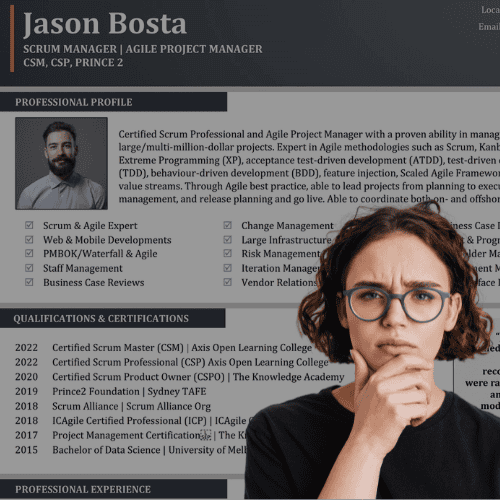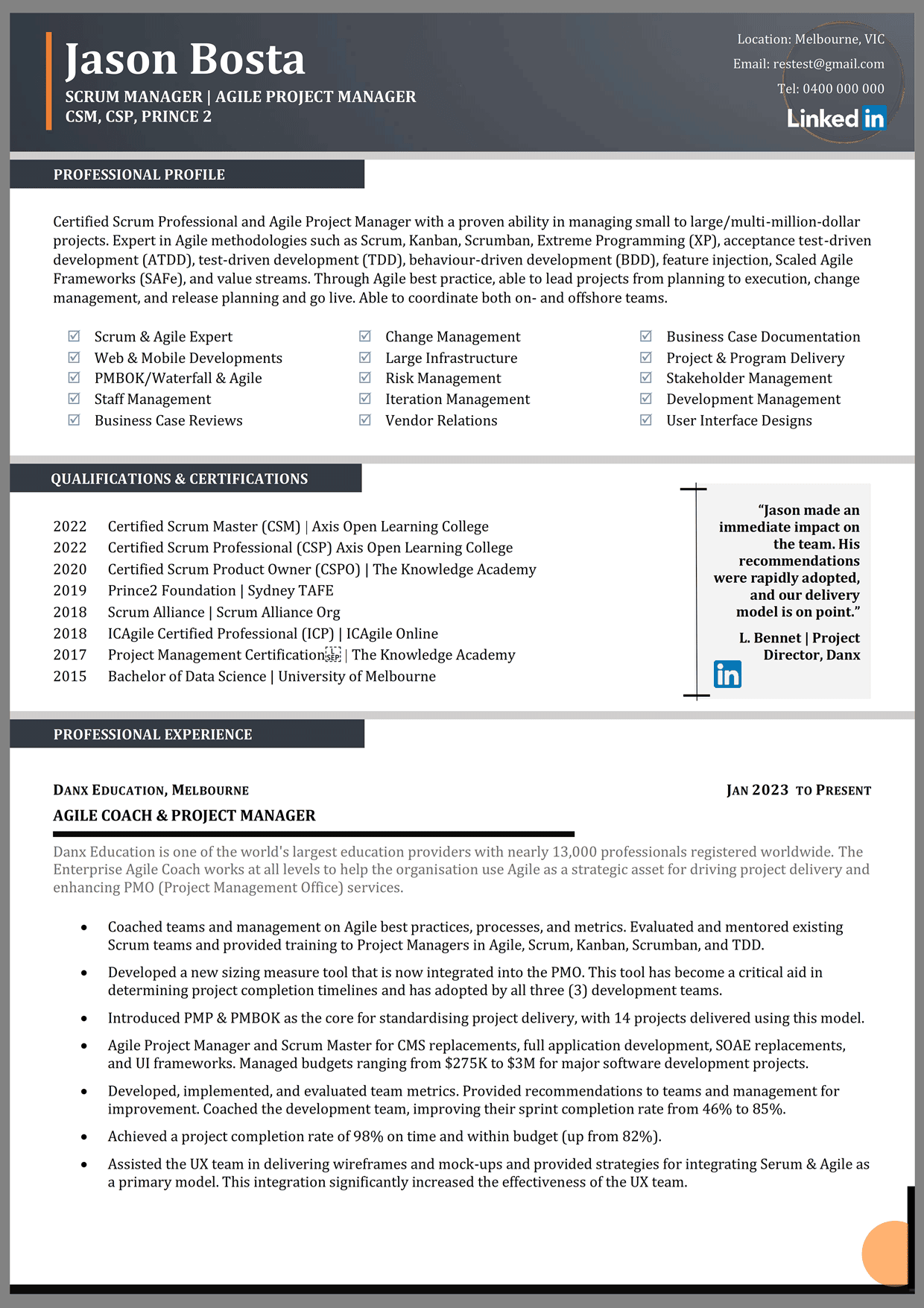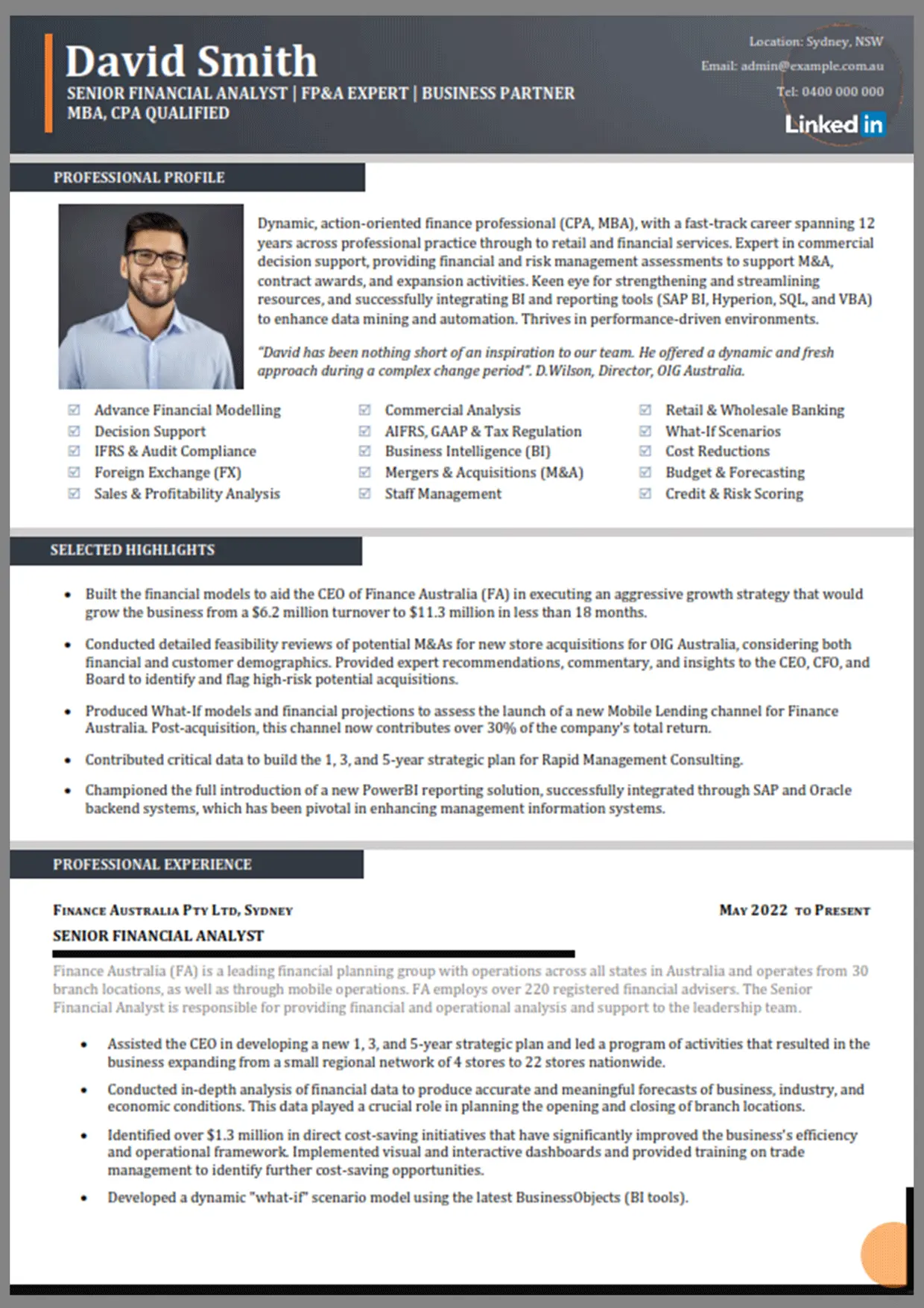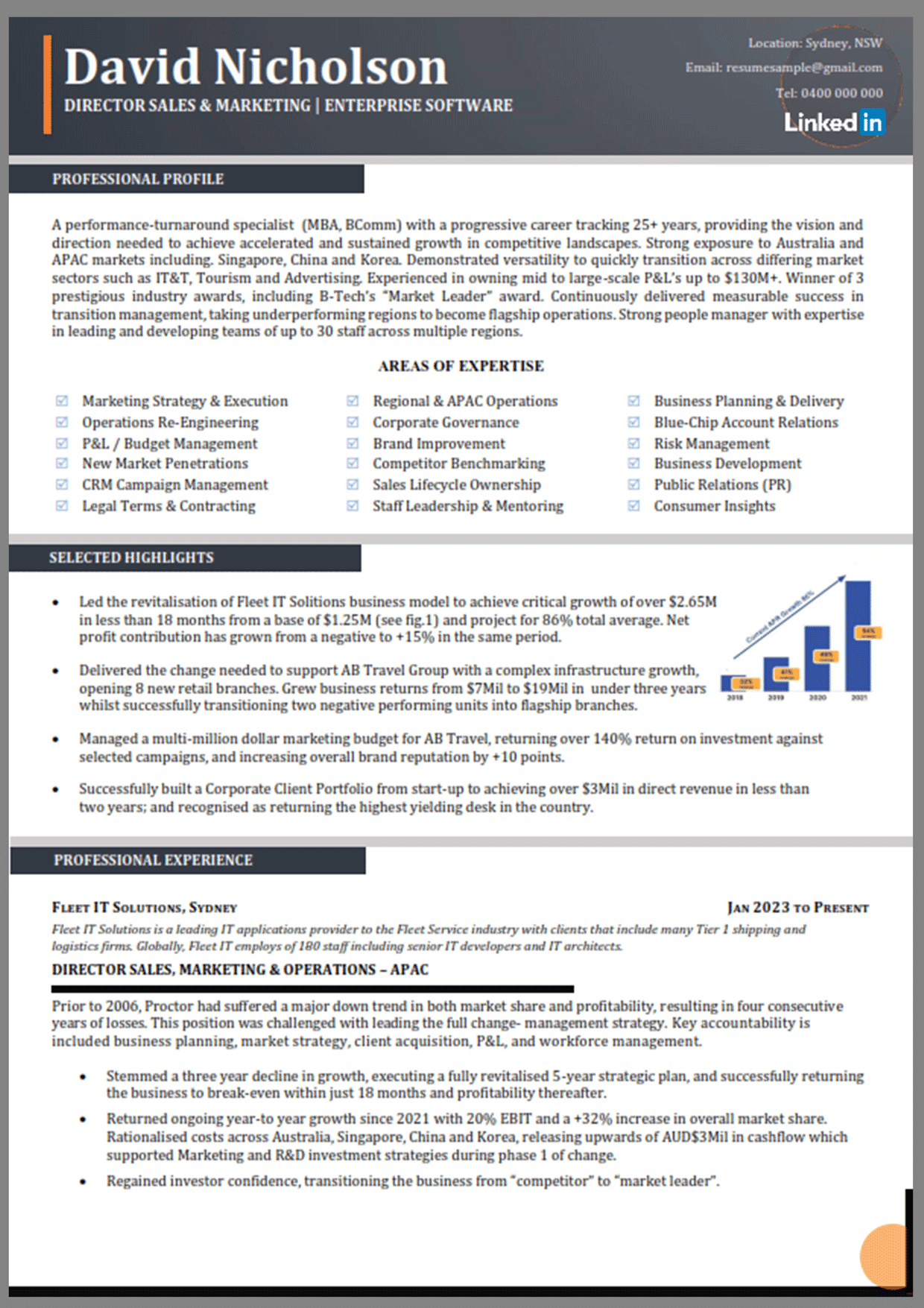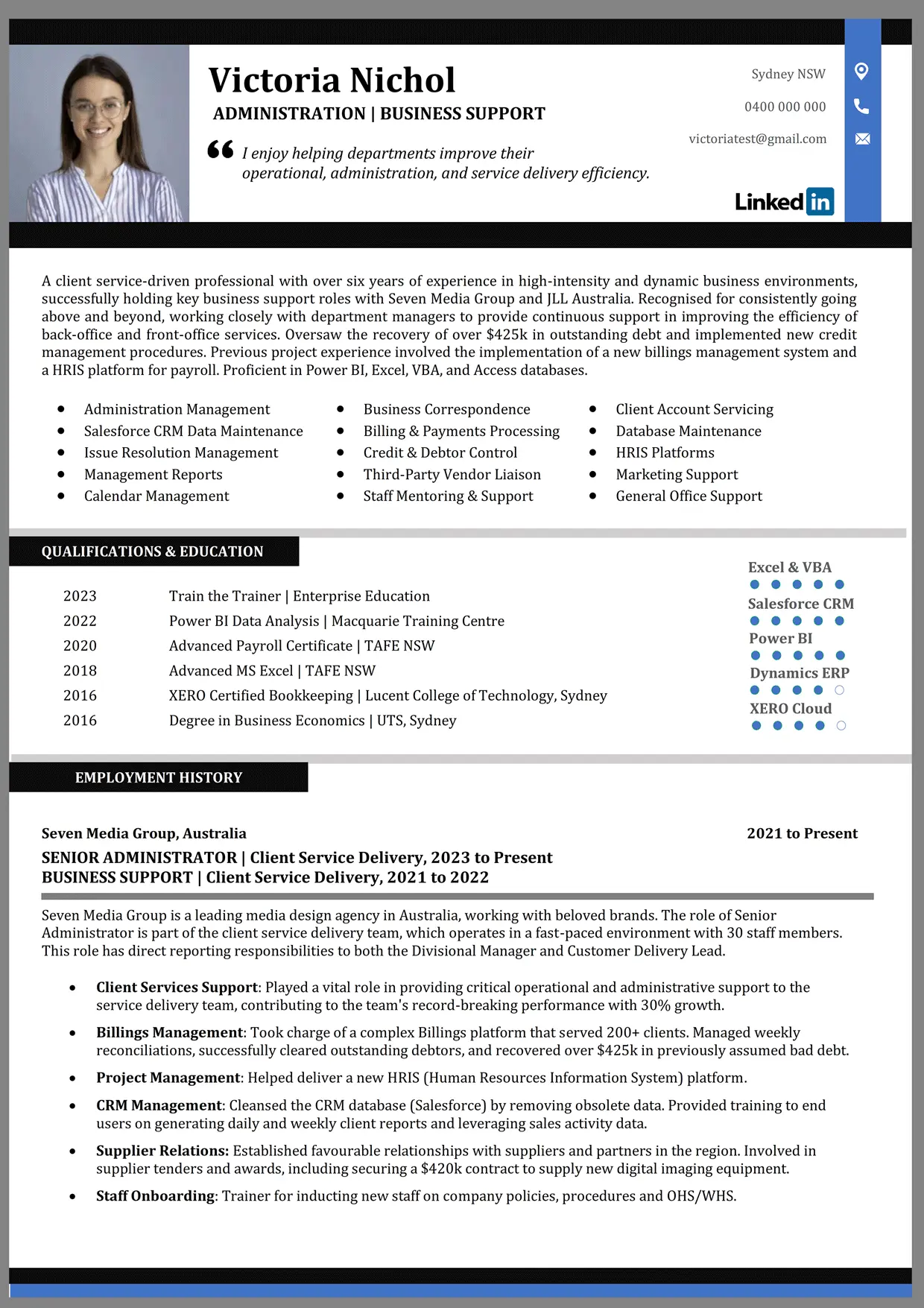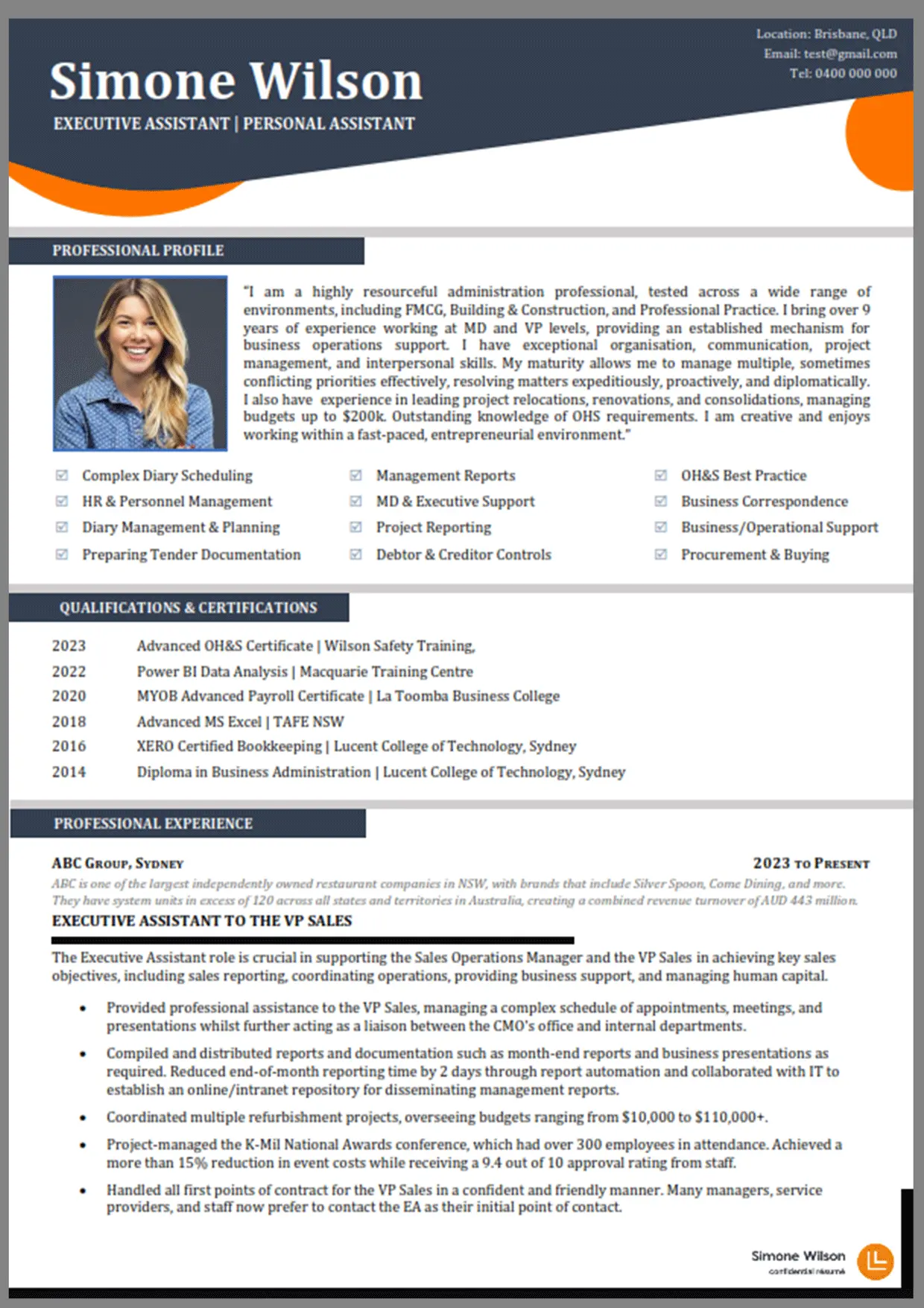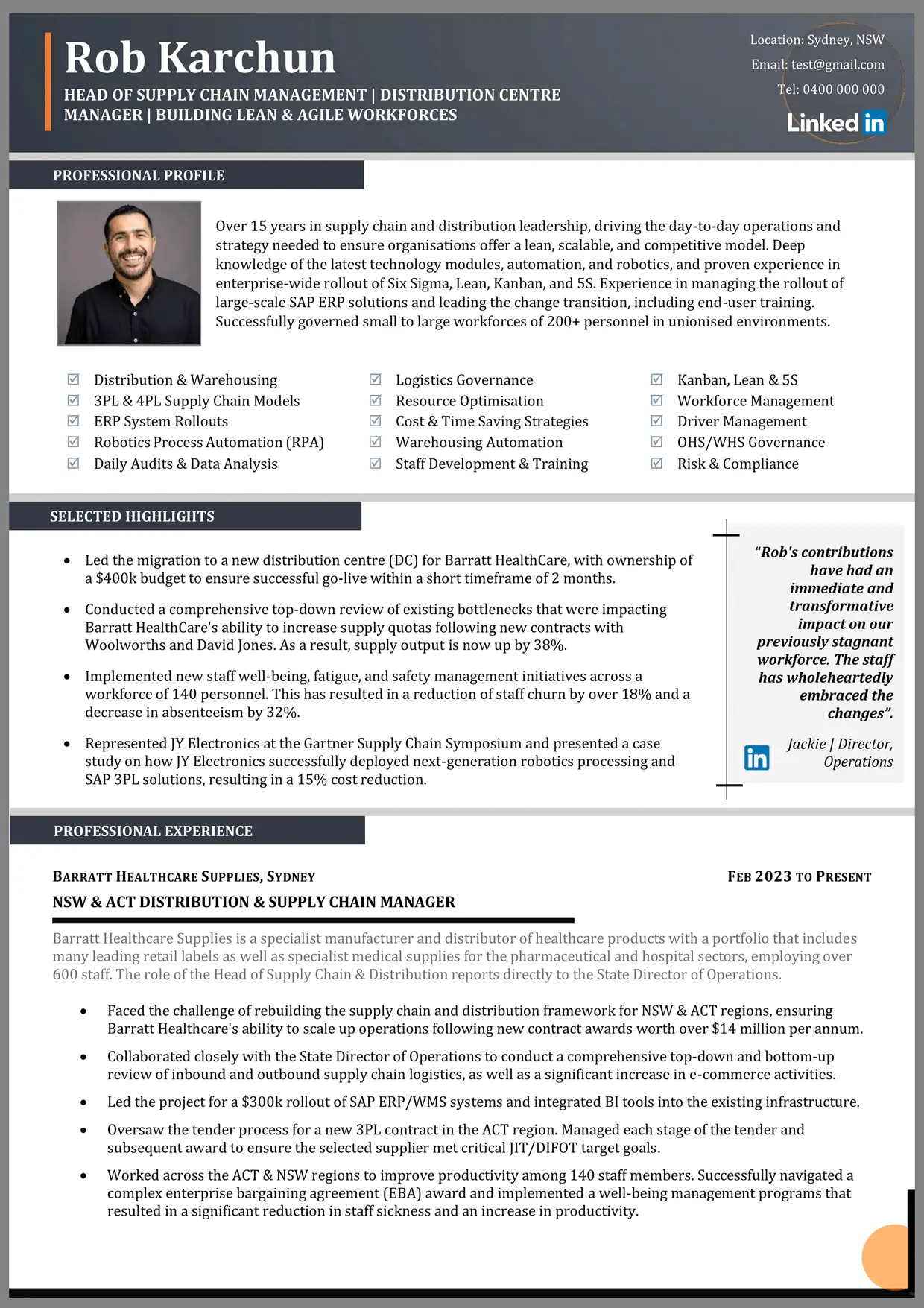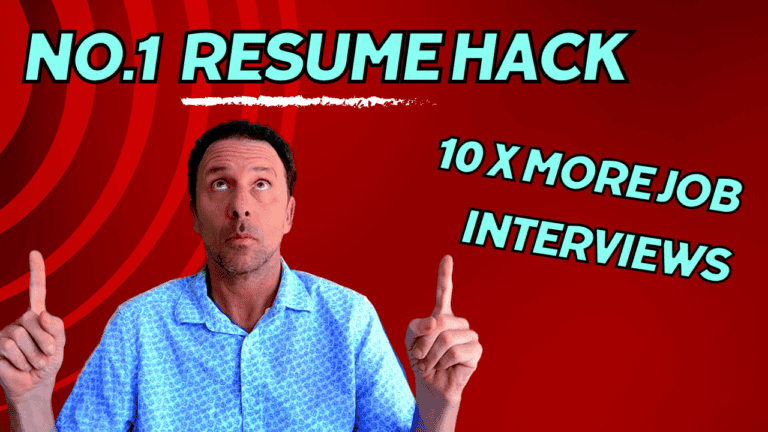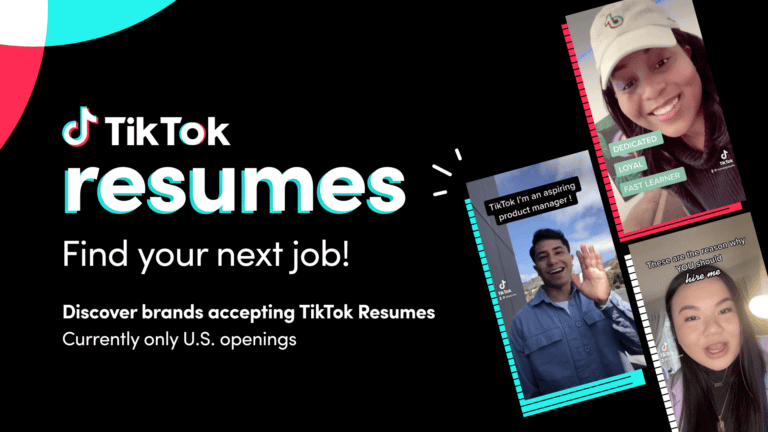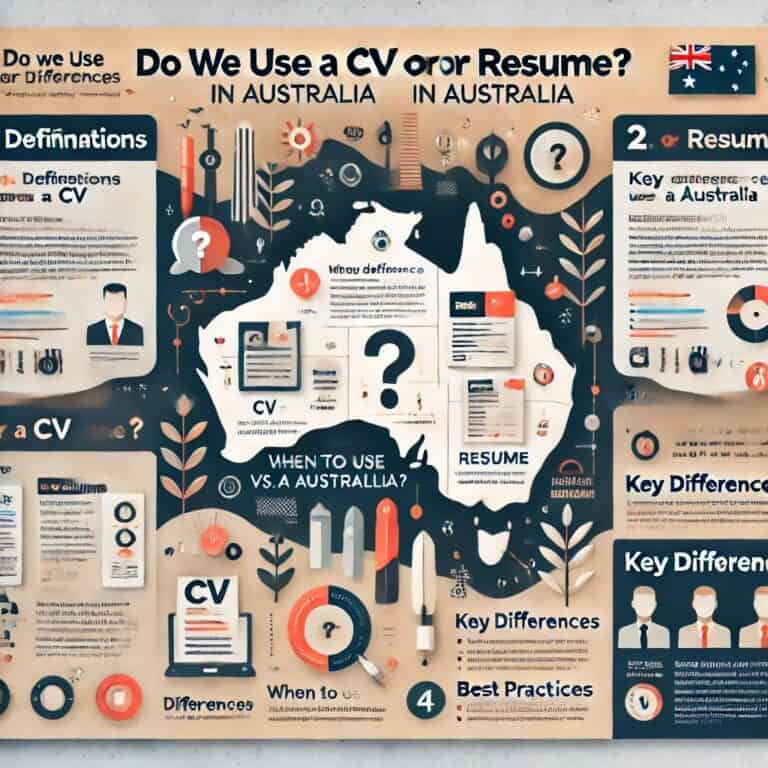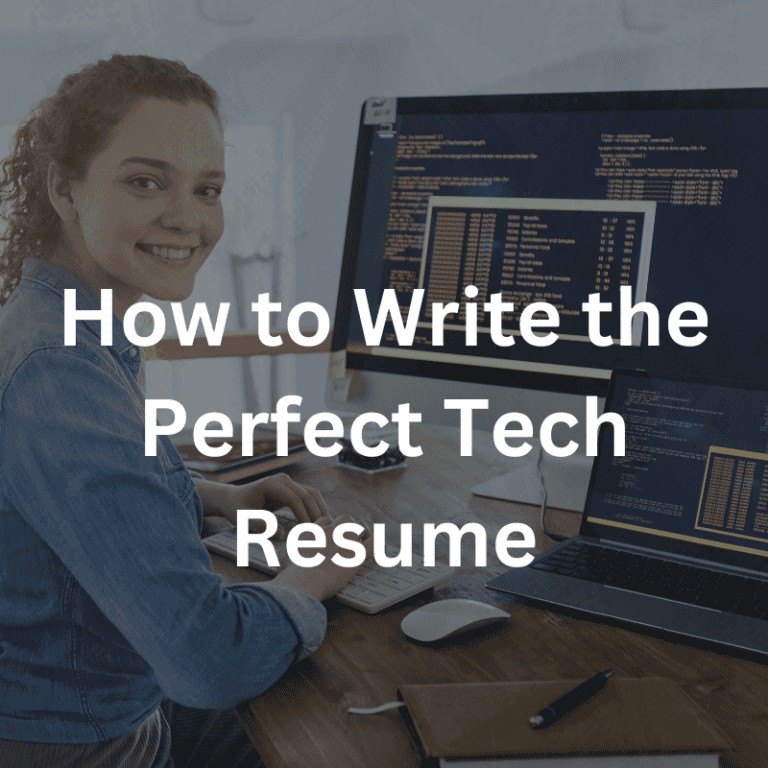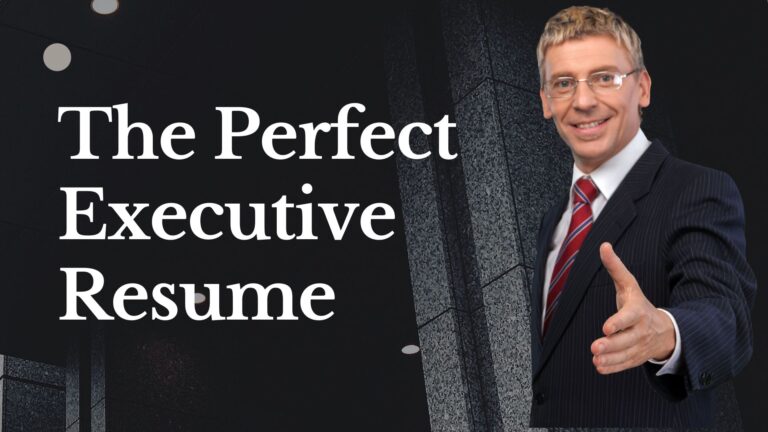Of the many years working in the industry, I’ve learned that choosing the best resume format can be fundamental to the success of your resume or CV. I have benefited from guiding countless clients through the job application process, and have learned that whilst there is no one size fits all, it’s important that the job seeker or individual understands the different tools available to improve their chances in the market. This guide will help you select the best resume layout and understand the different options you have.
The Importance of a Resume Format:
Your probably learned by now that a resume is more than just a document; and given how competitive the market is, your resume needs to tell your story one that is specific to your chosen target market. But what should you put on a resume? A well-chosen resume format for job applications are essential to make it easy on the recruiter and employer so they can quickly navigate through your work experience. In the world of resume writing, the best resume format strategy is one that not only presents your qualifications effectively, cut out noise, and quickly aligns with what today’s employers are looking for.
Best Resume Format:
The best resume format can be very dependent on the individual’s needs, where they are at with their career stage and the industry they are targeting. The following are the core resume formats that you will need to consider:
Chronological Resume Format
The chronological resume format is often ideal for those with a solid work history. It presents your job experiences in reverse chronological order, showcasing your career progression. This format is particularly effective in traditional industries like finance, marketing, IT, Supply chain, logistics, government, and healthcare, where a clear career trajectory is crucial. It’s also a format that makes sense, as you are looking to present your most current work history first. In my experience, this professional resume layout is probably the number one format used in the market, so you may want to base content on this type of template.
Functional or Skills Based Resume Format
For clients with gaps in employment or those shifting careers, I recommend the functional resume format. This layout helps you focus on skills and accomplishments rather than job history, making it suitable for those with diverse experiences or career changes (such as loss of contracts, hopping between jobs, and major career breaks). From my perspective, this modern resume format is particularly useful for demonstrating transferable skills and relevant achievements.
Combination of Functional & Chronological
The combination resume format merges elements of both chronological and functional resumes: but should be only used in specific circumstances, and you need to ensure that the format is clean and easy to work through. This layout allows you to highlight both your skills and your detailed work history. It’s a versatile choice that I’ve found effective for those well a chronological resume won’t quite fit, and a functional resume would be too basic. This modern resume layout can offer a balanced view of your qualifications and accomplishments.
Multi-Box & Graphical Resume Format:
These newer formats often feature clean lines, ample white space, and subtle colour accents, making them visually appealing while remaining professional. The also great if you want to use various graphics as well as imagery. There’s a huge number of websites offering modern resume formats, and can be a great solution for the creative or tech industries, where design and readability are crucial. However, the problem with these resume’s is that they are often in multiple boxes, making it difficult to manipulate, and confusing for the eye. Also, if you’re not used to working with PSD files, you’ll find it frustrating to adapt the resume.
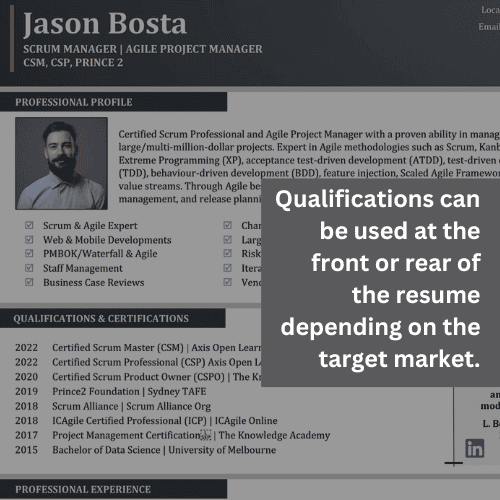
Best Resume Layout:
Personally, I think the best resume format remains the chronological resume, as it’s more widely accepted in the market, and you don’t run the risk of a recruiter not being able to see the information they need (keep in mind that a resume is to stack up to the 10 second rule).
However, whatever format you choose, Essential sections such as contact information, a professional summary, work experience, education, and skills should be clearly defined. I advise ensuring these sections are logically arranged to enhance readability. My experience has shown that a well-organized resume layout makes it easier for recruiters to find key information.
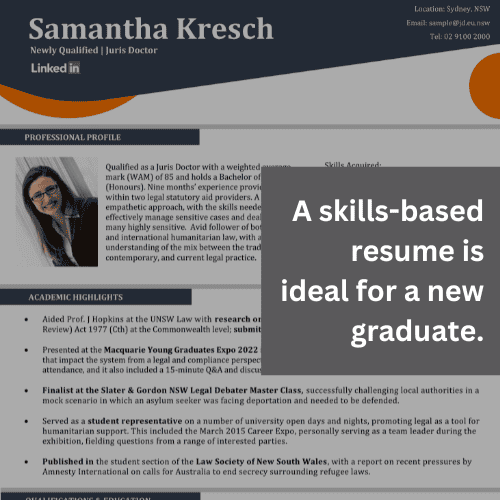
Tailoring the structure of the resume:
Tailoring your resume for each job application is crucial. Matching your resume format and content to the job description using relevant keywords helps you pass through Applicant Tracking Systems (ATS). There’s plenty of how-to guides on this website, some make use of the different strategies needed to pass the very latest ATS systems. But don’t forget, keywording is just a small part of the puzzle. From my experience, the resume that achieves the very best results are focusing on achievements and quantifiable results. Furthermore, cut out content noise, and focus on the target market. Don’t try to write everything down. What’s more, you can then incorporate the Top 100 Action Verbs from our list.
How long should a resume be?
This question comes up time and time again. For Australia, we typically work around 2 to 3 pages, sometimes 4 if the needs arises (such as a complex project manager resume of a long-term contractor). Those coming from the UK, will suggest you keep CV to 2 pages, and the US can see CVs and resumes a short as just 1 page.
So What Are The Most Impressive Resumes?
Resumes that performe best are built around specific jobs or target audiences. No matter the format you use, often it is a content that can be the king. The most impressive resume templates are ones that use of headers, bullet points, key skills matrix, and of course whitespace. Each section should be clearly labelled and logically arranged to make your resume easy to navigate. This structure is essential for presenting your qualifications in a clear and compelling manner.
The style of your resume should reflect your industry and personal brand. From my perspective, a traditional style is effective in conservative industries, while a modern or creative style may be more suitable for contemporary fields. I’ve used various resume styles to match clients’ professional levels and industry expectations, ensuring their resumes effectively represent their personal brand.

Final thoughts…
Selecting the best resume format is a crucial step in advancing your career. Drawing on my extensive experience, I’ve seen how the right format, layout, and style can significantly enhance your resume and improve your job prospects. Keep in mind, we are looking to impress a variety of audiences, so anything OTT can have a negative effect. Whether you’re a recent graduate or an experienced professional, the key is to choose a format that highlights your strengths and aligns with your career goals is key.
